When it comes to plants, there are two main categories: fast-growing and slow-growing. Both have their own benefits and drawbacks, so it’s important to choose the right type of plant for your needs.
Fast-growing plants are, as the name suggests, those that grow quickly. This can be beneficial if you’re looking for quick results or if you have a large space to fill. However, fast-growing plants can also be more difficult to care for, as they often require more attention and effort.
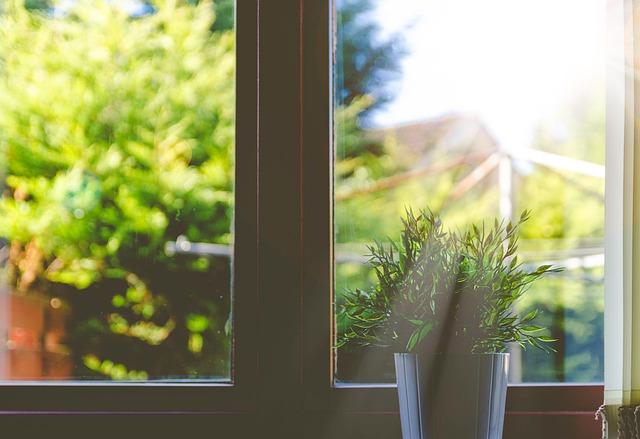
Slow-growing plants, on the other hand, take their time when it comes to growing. This can be good if you’re patient and don’t mind waiting a while for results, or if you don’t have a lot of space. Slow-growing plants are usually easier to care for than fast-growing ones, as they don’t need as much attention.
So, which type of plant is right for you? It really depends on your individual needs and preferences.
What Are Slow And Fast Growing Plants?
There are two types of plants: slow-growing and fast-growing. Slow-growing plants take longer to mature and produce less fruit or flowers than fast-growing plants. Fast-growing plants mature quickly and produce more fruit or flowers.
There are several factors that determine how fast or slow a plant grows. These include the plant’s genetics, the amount of sunlight it receives, the amount of water it receives, and the type of soil it is grown in.
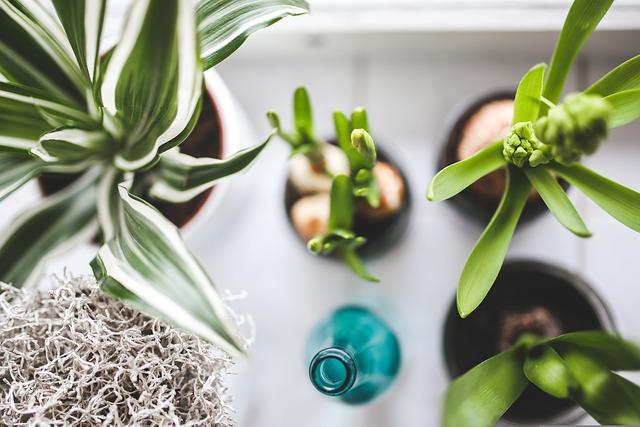
Some plants are naturally fast growers, while others are naturally slow growers. However, even fast-growing plants can be slowed down by poor growing conditions, while even slow-growing plants can be sped up by ideal growing conditions.
- Some common fast-growing plants include sunflowers, tomatoes, and cucumbers. These plants can reach their full size in just a few months.
- Some examples of slow-growing plants include roses, trees, and shrubs. These plants can take years to reach their full size.
So, which type of plant is better? That depends on what you are looking for. If you want a plant that will mature quickly and produce a lot of fruit or flowers, then a fast-growing plant is a good choice. If you want a plant that will last for many years and provide a lot of shade, then a slow-growing plant is a better choice.
The Benefits Of Slow Growing Plants
When it comes to plants, there are two different types of growth rates: slow and fast. Both have their own benefits, but slow-growing plants have some distinct advantages.
- For one, slow-growing plants are typically more resilient and can better withstand environmental stressors. They also tend to be more drought-tolerant, which is beneficial in areas with limited water resources.
- In addition, slow-growing plants often require less maintenance than their fast-growing counterparts. This is because they typically have deeper root systems, which help to stabilize the plant and reduce the need for frequent watering and fertilizing.
So, if you’re looking for a low-maintenance plant that can withstand tough conditions, a slow-growing variety may be the best option.
The Benefits Of Fast Growing Plants
There are plenty of benefits that come with planting fast-growing plants.
- First, they tend to be more resilient and adaptable to different types of environments. They also require less maintenance and care, which means you can save time and money in the long run.
- In addition, fast-growing plants can provide you with quick results. If you’re looking to add some green to your home or office space, fast-growing plants are a great option. They can also be used to fill in gaps in your garden or to create a privacy screen.
- Lastly, fast-growing plants can be a great source of food. If you’re looking to grow your own fruits and vegetables, fast-growing plants can give you a bountiful harvest in a shorter amount of time.
Hence, if you’re looking for plants that are low-maintenance, fast-growing, and versatile, consider planting some fast-growing varieties in your garden.
How To Choose The Right Plant For Your Space
It is important to choose the right plant for your space. If you choose a plant that grows too slowly, it will take a long time to fill in the space. If you choose a plant that grows too fast, it will quickly outgrow its space.
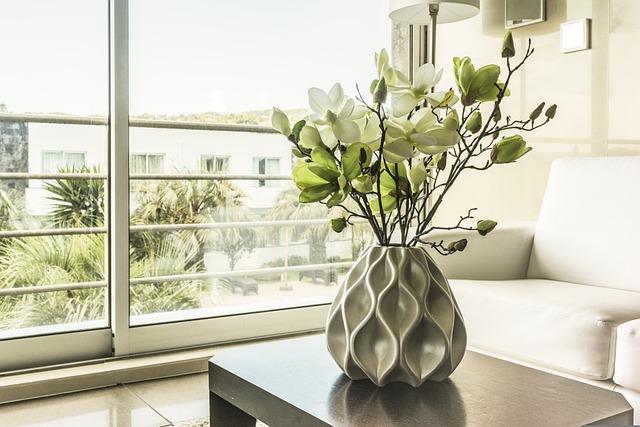
Here are some things to consider when choosing a plant for your space:
- The size of the plant. Make sure to choose a plant that will be the right size for the space you have.
- The growth rate of the plant. Make sure to choose a plant that will grow at the right speed for the space you have.
- The light requirements of the plant. Make sure to choose a plant that will get the right amount of light for the space you have.
- The water requirements of the plant. Make sure to choose a plant that will get the right amount of water for the space you have.
The Best Slow Growing Plants For Beginners
There are a lot of reasons why you might want to grow slow-growing plants. Maybe you don’t have a lot of space, or you want to take your time with your gardening. Whatever the reason, there are some great slow-growing plants out there that are perfect for beginners.
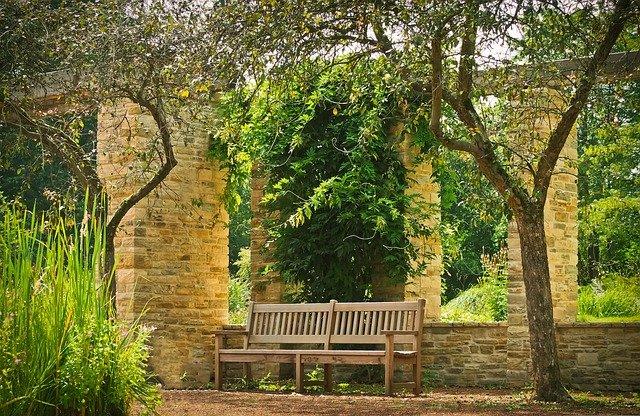
Here are a few of the best:
1. Spider Plants
Spider plants are one of the most popular houseplants around, and they’re perfect for beginners. They’re very easy to care for, and they grow slowly.
2. Snake Plants
Snake plants are another great option for beginners. They’re very tough and easy to care for, and they grow slowly, so you can take your time with them.
3. Succulents
Succulents are a great choice for beginners because they’re very easy to care for. They don’t need a lot of water, and they can tolerate a wide range of light levels. Plus, they grow slowly, so you can take your time with them.
4. Air Plants
Air plants are great slow-growing plants for beginners because they’re very easy to care for. They don’t need any soil, and they can tolerate a wide range of light levels.
5. Ferns
Ferns are a great choice for beginners because they’re very easy to care for. They don’t need a lot of water, and they can tolerate a wide range of light levels. Plus, they grow slowly, so you can take your time with them.
The Best Fast Growing Plants For Beginners
If you’re looking for fast-growing plants to add to your garden, here are some great options to get you started.
1. Sunflowers
Sunflowers are one of the most popular choices for beginner gardeners. They’re easy to grow from seed, they don’t require much maintenance, and they bloom quickly. Plus, they make a great addition to any garden with their bright, cheerful flowers.
2. Marigolds
Like sunflowers, marigolds are also easy to grow and maintain. They’re perfect for beginners because they’re tolerant of a wide range of conditions and they bloom in just a few weeks. Marigolds come in a variety of colors, so you can choose the perfect shade to complement your garden.
3. Zinnias
Zinnias are another great option for beginner gardeners. They’re easy to grow from seed, they bloom quickly, and they come in a wide range of colors. Zinnias are also relatively tolerant of poor growing conditions, so they’re perfect for those who are just starting out.
4. Cosmos
Cosmos are another great choice for beginner gardeners. They’re easy to grow and maintain, and they bloom in just a few weeks. Cosmos come in a variety of colors, so you can choose the perfect shade to complement your garden.
5. Impatiens
Impatiens are a great choice for beginner gardeners because they’re easy to grow and maintain. They bloom in just a few weeks, and they come in a wide range of colors. Impatiens are also tolerant of a wide range of conditions, so they’re perfect for those who are just starting out.
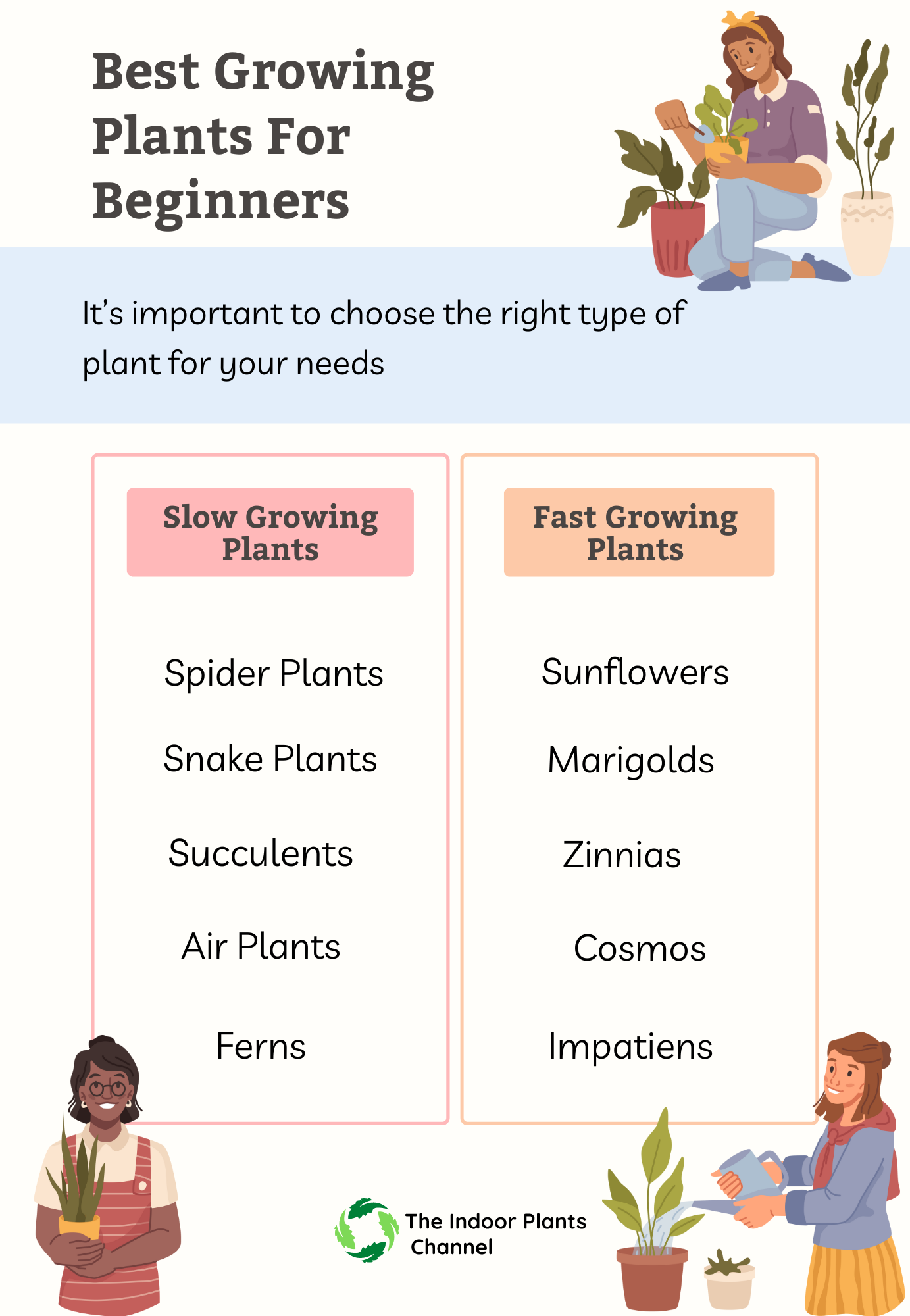
How To Care For Slow Growing Plants
Slow-growing plants need special care to ensure that they thrive. Here are some tips on how to care for slow-growing plants:
- Choose the right location. Slow-growing plants need a spot that gets plenty of sunlight and has well-drained soil.
- Water regularly. Slow-growing plants are more susceptible to drought stress, so make sure to water them regularly. during hot, dry periods.
- Fertilize regularly. Slow-growing plants need more frequent fertilization than fast-growing plants. Apply a balanced fertilizer every 2-4 weeks.
- Prune carefully. When pruning slow-growing plants, be careful not to damage the plant or remove too much of the growth.
How To Care For Fast Growing Plants
- Water your fast-growing plants regularly. Keep the soil moist, but not soggy. Water in the morning so the leaves have time to dry before nightfall.
- Fertilize your fast-growing plants every two weeks with a water-soluble fertilizer.
- Prune your fast-growing plants as needed to shape them and control their growth.
- Monitor your fast-growing plants for pests and diseases. Treat them promptly if you notice any problems.
Bonus Tips
- Grow a slow-growing plant alongside a fast-growing plant and compare the two
- Do some research on the internet or in books to find out which plants are slow-growing and which are fast-growing
- Talk to someone who is knowledgeable about plants and ask for their advice on growing slow-growing plants
Frequently Asked Questions
-
What is the difference between slow-growing and fast-growing plants?
Slow-growing plants generally have a slower growth rate than fast-growing plants. This means that they may take longer to reach their full size, and may produce fewer leaves, flowers, or fruits than fast-growing plants.
-
What are some examples of slow-growing plants?
Some examples of slow-growing plants include cacti, ferns, and bonsai trees.
-
What are some examples of fast-growing plants?
Some examples of fast-growing plants include bamboo, annual flowers, and tomato plants.
-
Why would someone want to grow a slow-growing plant?
There are several reasons why someone might want to grow a slow-growing plant. Slow-growing plants may be more resistant to pests and diseases and may require less maintenance than fast-growing plants. Additionally, slow-growing plants may live longer than fast-growing plants.
-
Why would someone want to grow a fast-growing plant?
There are several reasons why someone might want to grow a fast-growing plant. Fast-growing plants may produce more leaves, flowers, or fruits than slow-growing plants. Additionally, fast-growing plants may be easier to care for than slow-growing plants.
-
How can I tell if a plant is slow-growing or fast-growing?
The best way to tell if a plant is slow-growing or fast-growing is to ask the nursery or garden center where you purchased the plant. They should be able to tell you whether the plant is slow-growing or fast-growing.
-
Can I make a slow-growing plant grow faster?
There are several ways to make a slow-growing plant grow faster. These include adding fertilizer, increasing the amount of sunlight the plant receives, and watering the plant more frequently.
-
Can I make a fast-growing plant grow slower?
There are several ways to make a fast-growing plant grow slower. These include decreasing the amount of fertilizer the plant receives, reducing the amount of sunlight the plant receives, and watering the plant less frequently.
-
What are some tips for growing slow-growing plants?
Some tips for growing slow-growing plants include giving the plants plenty of space to grow, planting them in well-drained soil, and avoiding over-watering.
-
What are some tips for growing fast-growing plants?
Some tips for growing fast-growing plants include planting them in rich, fertile soil, providing them with plenty of water, and giving them plenty of sunlight.
Conclusion
In conclusion, there are pros and cons to both slow-growing and fast-growing plants. It really depends on your needs and preferences as to which type of plant is best for you. Be sure to do your research before making a purchase, so that you can make the best decision for your garden.
Michelle Wilde
Related posts
1 Comment
Leave a Reply Cancel reply
![]()
About Michelle Wilde
Michelle Wilde is a stay-at-home mom and avid plant lover. Armed with a post-graduate degree in Computer Science (no kidding!), she loves researching plants and landscapes. When she is not caring for her 4 kids, she spends time on her passion for plants. She blogs at www.indoorplantschannel.com, the trusted source for indoor plants.
Learn more
Subscribe
* You will receive the latest posts and updates about indoor plants!
Search
Recent Posts
Categories
- FAQ (218)
- General (1)
- How-To Guides (220)
- Indoor Plants (220)
[…] one of the most important things to consider is the growth rate of the plants you choose. Slow-growing plants have a number of benefits that make them ideal for many different types of landscaping […]